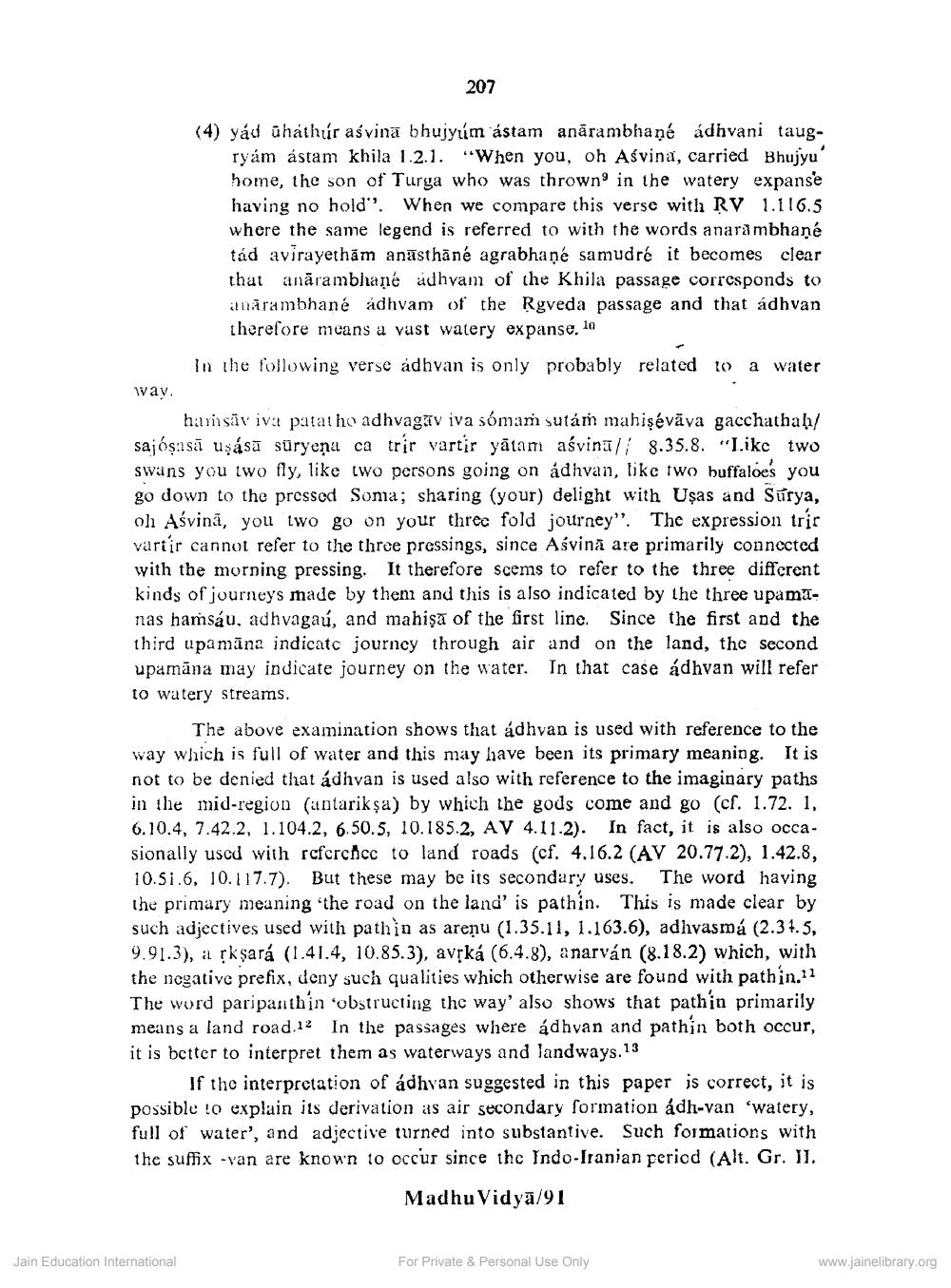________________
way.
207
(4) yád hathur aśvina bhujyúm ástam anarambhané ádhvani taugryam ástam khila 1.2.1. "When you, oh Asvina, carried Bhujyu" home, the son of Turga who was thrown in the watery expanse having no hold". When we compare this verse with RV 1.116.5 where the same legend is referred to with the words anarambhané tád avirayetham anasthäné agrabhané samudré it becomes clear that anarambhané adhvam of the Khila passage corresponds to anarambhané adhvam of the Rgveda passage and that ádhvan therefore means a vast watery expanse. 10
In the following verse ádhvan is only probably related to a water
hamsiv iva patat ho adhvagav iva sómam sutám mahişéväva gacchathab/ sajósasa usása süryena ca trir vartir yatam aśvina/ 8.35.8. "Like two swans you two fly, like two persons going on ádhvan, like two buffaloes you go down to the pressed Soma; sharing (your) delight with Usas and Surya, oh Aśvina, you two go on your three fold journey". The expression trir vartir cannot refer to the three pressings, since Aávină are primarily connected with the morning pressing. It therefore seems to refer to the three different kinds of journeys made by them and this is also indicated by the three upamanas hamsáu, adhvagaú, and mahisă of the first line. Since the first and the third upamana indicate journey through air and on the land, the second upamana may indicate journey on the water. In that case ádhvan will refer to watery streams.
The above examination shows that ádhvan is used with reference to the way which is full of water and this may have been its primary meaning. It is not to be denied that ádhvan is used also with reference to the imaginary paths in the mid-region (antariksa) by which the gods come and go (cf. 1.72. 1, 6.10.4, 7.42.2, 1.104.2, 6.50.5, 10.185.2, AV 4.11.2). In fact, it is also occasionally used with reference to land roads (cf. 4.16.2 (AV 20.77.2), 1.42.8, 10.51.6. 10.117.7). But these may be its secondary uses. The word having the primary meaning the road on the land' is pathin. This is made clear by such adjectives used with pathin as areņu (1.35.11, 1.163.6), adhvasmá (2.34.5, 9.91.3), a rksará (1.41.4, 10.85.3), avṛká (6.4.8), anarván (8.18.2) which, with the negative prefix, deny such qualities which otherwise are found with pathin.11 The word paripanthin obstructing the way' also shows that pathin primarily means a land road.12 In the passages where ádhvan and pathin both occur, it is better to interpret them as waterways and landways.13
Jain Education International
If the interpretation of ádhvan suggested in this paper is correct, it is possible to explain its derivation as air secondary formation ádh-van 'watery, full of water', and adjective turned into substantive. Such formations with the suffix van are known to occur since the Indo-Iranian period (Alt. Gr. 11.
Madhu Vidya/91
For Private & Personal Use Only
www.jainelibrary.org




